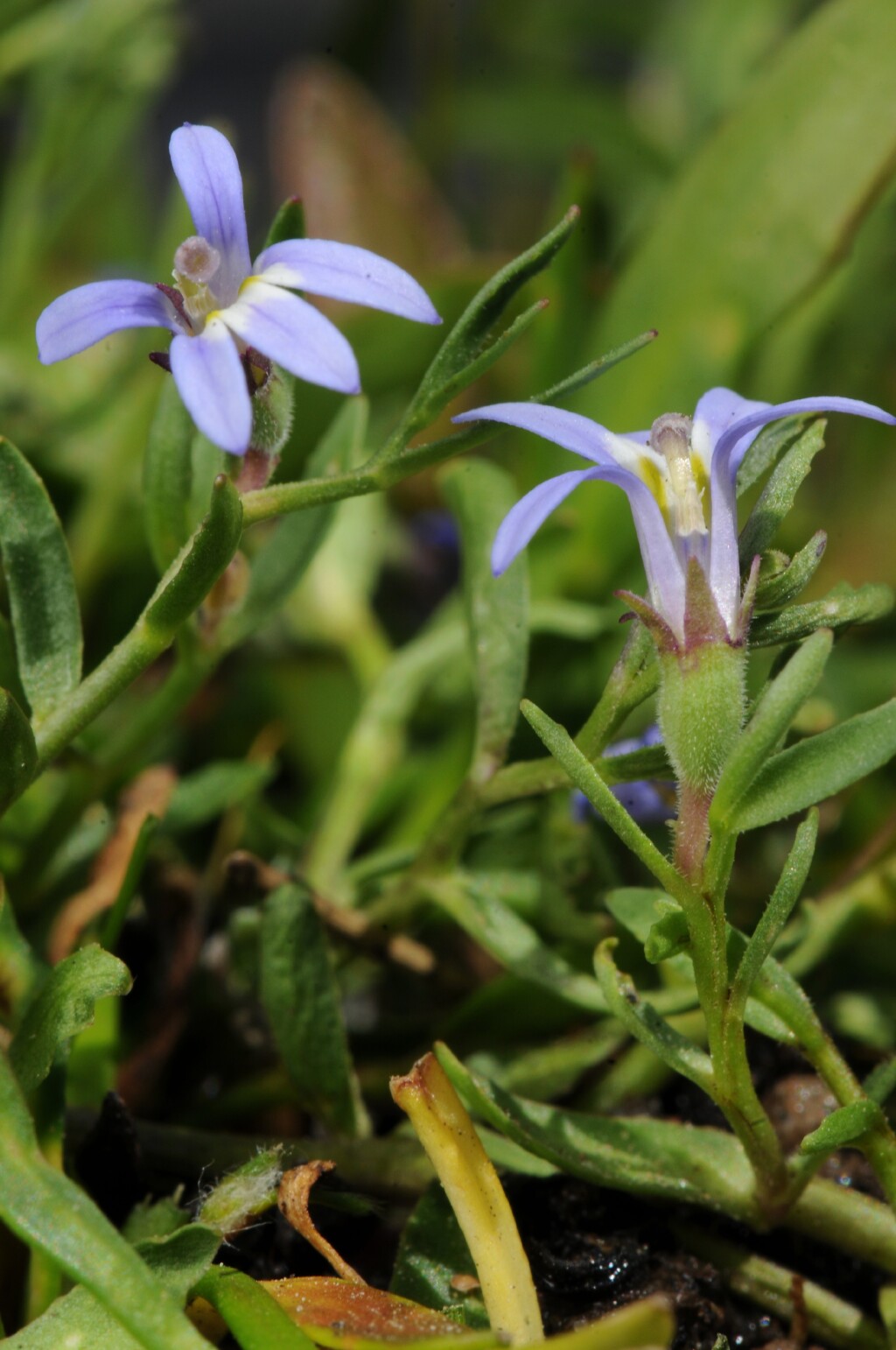Lobelia pratioides
Benth. Poison LobeliaProstrate to ascending, minutely pubescent to glabrous, usually dioecious perennial; stems sometimes zigzagged, rooting at nodes. Leaves often distichous, lanceolate to oblanceolate, rarely obovate, 5–35 mm long, 1.2–6(–12) mm wide, toothed, rarely subentire; petiole indistinct. Flowers irregularly spaced; pedicels 2–50 mm long, minutely pubescent, rarely glabrous. Calyx-lobes 1.5–3 mm long, entire or toothed; corolla weakly 2-lipped, 5.5–11 mm long, blue to light violet, lobes spreading, subequal or upper 2 slightly narrower and/or more deeply cleft, narrowly elliptic to oblanceolate, 2.5–6.5 mm long, 0.8–2.5 mm wide, tube 3–5 mm long, split almost to base, with fine retrorse hairs internally; filaments 2.5–4 mm long, anther tube 1–2.2 mm long in male and bisexual flowers, c. 1–1.5 mm long in females, 2 lower anthers each with an apical seta 0.2–0.5 mm long and penicillate hairs, the apex of the upper 3 anthers with a very inconspicuous crest-like tuft of hairs. Capsule broadly obovoid, c. 3–5 mm long; seeds ellipsoid, slightly compressed, 0.7–0.9 mm long, darkish brown, reticulate, with alveoles c. isodiametric.
LoM, MuM, Wim, GleP, Brid, VVP, VRiv, MuF, GipP, OtP, WaP, Gold, CVU, GGr, DunT, NIS, EGL, EGU, HSF, HNF, OtR, Strz, VAlp. Also SA, NSW, Tas. Occurs on seasonally inundated or waterlogged heavy soils (sometimes in association with surface rocks) along drainage lines, and in or on the margins of swampy depressions. Flowers Sep.-May. Fruits c. Nov.-May.
Specimens from near the Murray River (e.g. Barmah, Cobram, and southern New South Wales) differ from more southern plants in having broader leaves (often more than 6 mm wide). Ripe fruits and seeds are required to confirm the taxonomic status of these populations.
Albrecht, D.E.; Walsh, N.G. (1999). Campanulaceae. In: Walsh, N.G.; Entwisle, T.J., Flora of Victoria Vol. 4, Cornaceae to Asteraceae, pp. 553–553. Inkata Press, Melbourne.
 Spinning
Spinning

